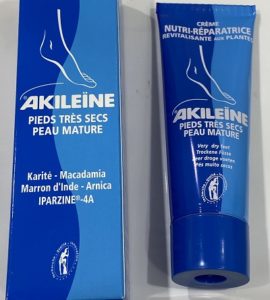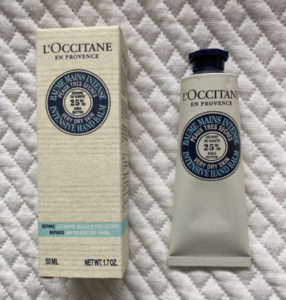Choosing the right Moisturizer for Feet
Feet can become dry, scaley, red and itchy. Which Moisturizer for Feet is best for my Feet? Using a cream seems simple enough until you discover there is an ocean of foot care products. Where do you start? What ingredients are best? Reading this article from our Podiatrist – before you wind up with a cabinet filled with bottles and tubes that don’t work. This article will help you make an informed decision on which Moisturizer to select for your Feet.
Features of the Ideal Moisturizer for Feet
The skin on the feet, ankles and legs can be affected by a range of uncomfortable and ugly superficial skin changes. Redness, scaley, dry, or itchy skin can often be self managed without the need to see a dermatologist. But you still need to choose well.
- Decrease or stop water loss from the Skin
- Add to the skin’s natural oil barrier
- Low allergy, fragrance free, non-sensitizing
- Not too greasy and sticky
- Affordable
Types of Moisturizers for Feet
Moisturizers are divided into 4 types depending on how they work. What works for one person with a particular skin problem may not work for another. Just to make things difficult, some products are a mixture of different types of moisturizers.
Emollients These add water to the skin and make the skin feel softer. Ingredient examples: squalene, fatty acids

Moisturizer for Dry Feet
Humectants These attract water from deep within the skin and from the air to the outer layers of the skin. May be emollients as well. Ingredient examples: glycerin, lactic acid, urea, sorbitol, hyaluronic acid
Occlusives Creating a barrier over the skin, occlusive are basically oils or waxes that prevent water loss from the skin. They are most effective when applied to moist skin Ingredient examples: Petrolatum, paraffin, beeswax, silicone, lanolin, zinc oxide
Protein rejuvenation These are believed to work by adding protein to the skin. These are generally more expensive. Ingredient Examples: Collagen, keratin
Forms of Moisturizers for Feet
Lotion A lotion is an oil in water. It will be more runny and less greasy. Easy to apply. Often cheaper
Cream A cream is an oil in less water or water in oil. Usually made with heavier oils than lotions. Usually doesn’t contain an occlusive, so can be quite a “light” cream.
Ointment An ointment in oil in even less water or water in oil. Will contain an occlusive moisturizer and will form a protective glossy layer. Not suitable for in between toes,
Gel A gel can be water in oil or oil in water with an added gelling agent. Very easily absorbed.
Uses for Foot Moisturizers
Hyperkeratosis
- Also known as callus and corns
- Thick skin around the heels
- Thick and dry skin around the heels
- Thick and dry AND cracked skin around the heels
- Dry skin on the ball of the Foot
- Thick skin on end of toes or on side of the little toe
Dermatitis
- Sort of round , almost flat, patches of red, scaley skin, sometimes itchy
- Can be on bottom or top of foot, around ankles and lower leg
Maintaining Skin Integrity
- Keeping the skin on the feet, ankles and lower legs in good condition is a really good preventative measure for everyone, particularly babies and older people
Aftercare for Foot Tattoos
- Applying a non-perfumed, non-coloured lotion or cream (e.g.Cetaphil) in the weeks following a new Tattoo is recommended by tattoo artists
Adverse Effects of Moisturizers
An adverse effect of a moisturizer usually presents as skin irritation. It can occur in response to any of the ingredients of a particular product. Perhaps it is the active ingredients or to additives such as preservatives, coloring or fragrance agents. Skin irritation can occur either as visible – redness, little blisters, or invisible – tingling, stinging. By keeping in mind the ingredients changing to a different type or form of moisturizer will narrow your choices and prevent discomfort.
Recommended Moisturizers
These moisturizers have a range of types and forms for your consideration:
- Akileine Nutri-Repair Dry Foot Cream (Emollient, Cream)
- L’Occitane Shea Butter Intensive Foot Balm
- L’Occitane Intensive Hand Balm ( if foot balm not available)
- Australian Golden Lanolin
- Ego Qv Cream
- Cetaphil Moisturizing Cream
- Epaderm Emollient for Dry Skin
- Dermadrate Dry Skin Treatment
Caring for the skin on your feet is important. Selecting the Ideal moisturizer for feet product should involve as much care as you would for a Product for your Face. Making informed choices will reduce the risk of skin irritation and cabinets filled with ineffective products. The ideal Foot moisturizing product will assist your self-management of uncomfortable and ugly superficial skin changes.
Sources
https://www.ncbi.nlm.nih.gov/pmc/articles/PMC4885180/
Rosemary Grenness Podiatrist
